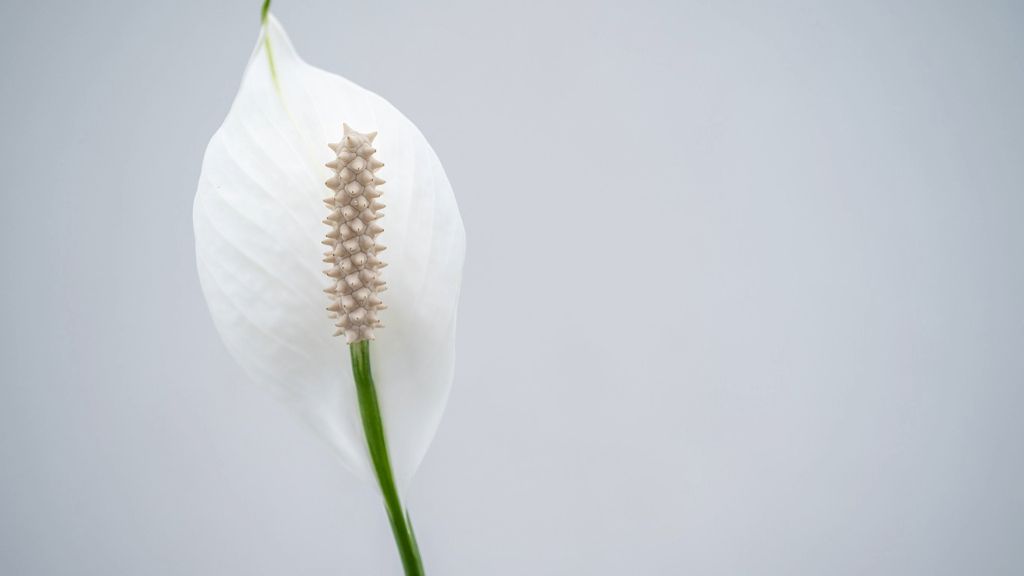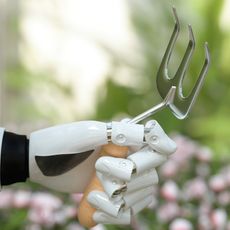Years of Blooms


My ultimate favorite flowering houseplant might be a mythical specimen, something I don’t own and that blooms continuously and beautifully. Since that doesn’t exist, I’ll choose a favorite from reality, my stalwart peace lily that has been with me for decades and that continues to surprise me with pretty white flowers.
Flowering Houseplants Over the Years
I have been growing houseplants—success varied—for decades. Long before I really knew anything about plants or how to care for them, I loved having them around.
Because I had little experience or knowledge, and no Google yet, I often had plants that lasted a few months or at least less than a year before quitting. In terms of flowering plants, I treasured a crown of thorns, spindly and unhealthy though it was. I loved the delicate little flowers that bloomed on tough, thorny stems.
Many, many African violets have passed through my hands. Their cheerful purple, pink, and white flowers are a great antidote to winter gloom, and they are cat friendly. Today, I am able to hang on to them much longer, getting continuous blooms, but in the past, I might go through one pot per month.
I have also gotten much better over the years at turning a five-dollar grocery store orchid into a long-term bloomer. I currently have a small specimen on the windowsill over the kitchen sink where it enjoys a daily warm steam bath.
About My Peace Lily
While most of my indoor flowers have come and gone over the years, my peace lily has been with me for literal decades. I acquired it from my grandma’s funeral, which I couldn’t attend because of college scheduling and exams. My parents kept it and then soon passed it on to me.
The likely reason that I still have a healthy peace lily is that this is an easy plant to grow. It tolerates neglect and even prefers to be confined to a pot. A confession I hate to make to other gardeners or plant enthusiasts is that I have never transplanted this beauty over more than 20 years. It is happy and content within the same pot and with the same soil.
Gardening tips, videos, info and more delivered right to your inbox!
Sign up for the Gardening Know How newsletter today and receive a free copy of our e-book "How to Grow Delicious Tomatoes".
How to Get Blooms from a Peace Lily
It was fortunate that my parents gifted me this particular plant because it arrived when I was still young and ignorant about plant care. It thrived despite infrequent waterings and no feedings.
Eventually, of course, it stopped producing new leaves and flowers. This triggered a desire in me to learn more, so I read up on my peace lily. I learned that I had generally been doing things right, although I could water it more.
I also found out that the pretty white flowers are not quite what I thought. The main part of the “flower” is actually a spathe, a modified leaf that protects the real flowers, which are small and grow on a spadix.
Because I kept it in the same pot and soil for years, the peace lily needed an infusion of nutrients to put out more growth. As with most flowering plants, there is a wrong way to do this. To get more flowers out of my peace lily it doesn’t need much. Over-fertilizing and overdoing nitrogen leads to more leaf growth and fewer or weaker flowers.
What I have discovered is that a basic flowering houseplant fertilizer is best. The extra phosphorus stimulates blooms. I use it just a few times over the summer to get more flowers and let it rest in the winter.
Another important factor in blooming for a peace lily is light. While it tolerates low light conditions, it does best in bright but indirect light for at least a few hours per day. It will flower more frequently with good light.
I expect that my peace lily will go on indefinitely. I plan to wheel it into my retirement home in the future, should I be lucky to live so long. With mostly hands-off care, this beauty has become a constant and favorite companion.

Mary Ellen Ellis has been gardening for over 20 years. With degrees in Chemistry and Biology, Mary Ellen's specialties are flowers, native plants, and herbs.
-
 Best Indeterminate Tomatoes: Flavor-Packed Varieties For Fresh Harvests All Summer Long
Best Indeterminate Tomatoes: Flavor-Packed Varieties For Fresh Harvests All Summer LongIndeterminate tomatoes are vining varieties that fruit all season. Discover their distinctive features and how to choose the best type to grow in your garden.
By Bonnie L. Grant
-
 The Dangers Of AI For Gardening – How To Know What’s Real When It Comes To Your Garden
The Dangers Of AI For Gardening – How To Know What’s Real When It Comes To Your GardenThings aren’t always what they seem when it comes to using AI for gardening. Be discerning when relying on AI for accuracy, and take the time to do research.
By Teo Spengler